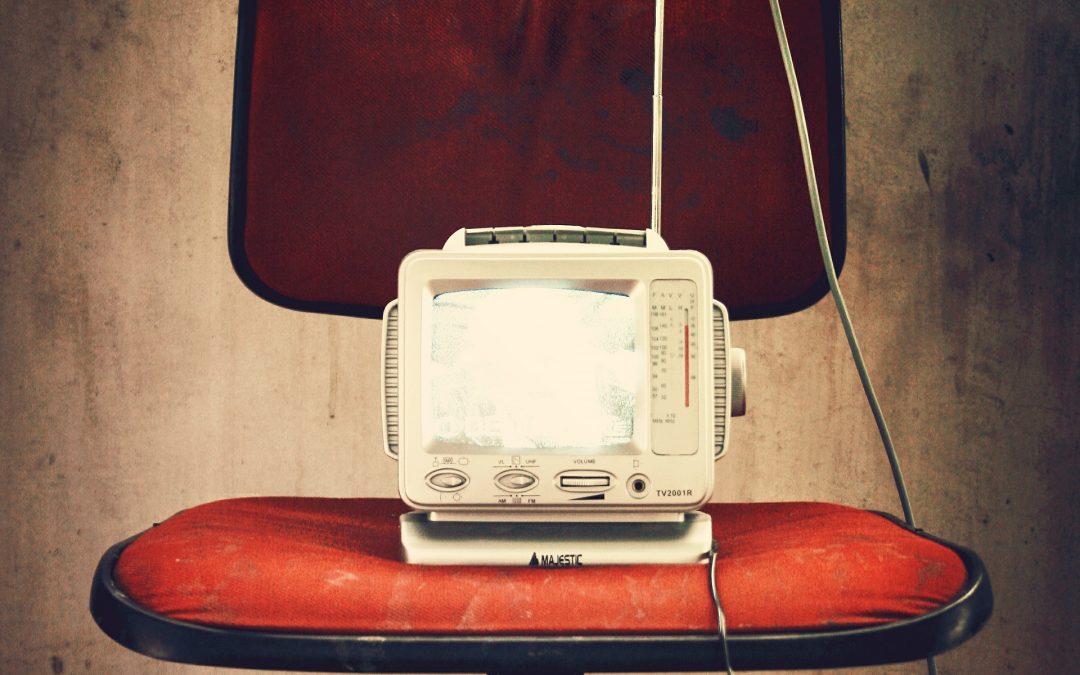Remember TV antennas? You’re probably thinking of those weird spindly things sticking out from the top of old TVs and the clichés of people whacking their TV to get a better signal and to get rid of the static.
A lot has changed since then. Now, some antennas are made of plastic and can be as thin as a piece of paper.
In fact, people are starting to use them again. They are cutting the cable cord and going to analog.
This is just one way that people are getting rid of cable. A lot of people are giving up their cable boxes due to how expensive it can be. People usually just use the internet and streaming services, but now antennas are joining the game.
What is an Amplified Antenna?
An amplified antenna is a regular antenna that has an amplifier to reach farther. The amplification itself doesn’t go past the antenna’s reach, and this pushes the signal outwards, so it can go even farther.
This makes it easier to reach the TV station’s transmitter. This tool is good for people who live far away from the station or live surrounded by buildings. These are things that can make it harder to get a signal and the amplifier is like a strength booster.
It also prevents the signal from falling. It can’t stop it completely, but it does minimize the chance that it will happen. You can also use it to have 2 TVs use the signal instead of one.
Sometimes antennas already have an amplifier built in. However, you can buy them on their own as well.
Antennas search the air so that you can get channels for free. Most major networks offer over the air (OTA) channels.
The channels you get depend on where you live and how close you are to a TV station. Usually the channels are local news, sports, cooking shows, and kid shows. The basics.
Depending on how strong your signal is, you can get a certain number of channels. Sometimes just moving your antenna around your house will offer you more.
How Does an Antenna Work?
An antenna searches for OTA signals, you can think of the signal as an invisible line. It’s above the Earth’s curve. Mountains and tall buildings will give you trouble with reception. It stops the invisible line in its place. It then it has to go around the obstacles to keep going.
You have to find where your local stations are first, to see if this will even work for you. Once you have found one, you will need to point the antenna in that direction.
You can use TV Fool to find it. You just put your address in and it will give you a list of stations near you. TV Fool is good because it will give you a polar graph and a color-coded list of channels. It will organize by the signal strength and distance.
There are a lot of factors in getting a good signal. You need to know the distance and direction from the TV station to your home. The transmitter’s power and height are also a factor.
If you are lucky enough to live close to a station, it will be easy to get a signal without anything blocking your path. Though it’s harder the father you go.
Directional and Multidirectional Antennas
To get signals you can pick from directional or multidirectional antennas. Directional are made to get signals from a single direction. Multidirectional is where can get a signal from anywhere.
Directional antennas are able to get signals from a further distance. This is because it’s focused on one direction. They are more resistant to noise distortion.
Multidirectional antennas are more likely to get noise, interference, and distortion because they look for signals in different direction. They also are more likely to offer you more channels because it’s going in different directions.

Active Vs. Passive Antennas
There are 2 types of antennas, active and passive. People probably think that active is better, but if you aren’t careful it can fry your system.
Active Antenna
These are antennas that have integrated signal amplifier built in. They can be used for receiving and transmitting, but are usually used as receivers.
Because they have an amplifier, their reach is farther and more powerful.
You should use this type when you have a hard time getting and keeping a signal. If you don’t use it the right way, it can overload your system. This can result in some terrible sounds overpowering your TV.
Passive Antenna
These are antennas that have no amplification stages. You can buy an amplifier separately and use the 2 together though.
It’s better to get this type of antenna if you are unfamiliar with the technology. They won’t fry your system.
Indoor Vs. Outdoor
Antennas have grown so much, technology wise, that you have the choice of indoor or outdoor antennas. Each have their pros and cons. It depends on your situation.
Indoor ones are small and lightweight. You can connect them easily to your TV. Most people put them near the TV because it’s easy, but putting it high on a wall or window gives you the best reception.
They sometimes struggle because the signal gets interference from the walls of your home and people walking by it. Though once again, an amplified antenna would help with these problems.
Outdoor antennas are larger and good for root attachment. The bigger the antenna the stronger the signal it gives. They tend to give better results than the indoor antennas.
How to Install an Amplified Antenna
Properly installing an amplified antenna is all about where you put it. It doesn’t matter whether it’s indoor or outdoor. The location will determine how many channels you get.

Installing Indoors
Most people start with the window since it’s the path of least resistance. Start with that location and run a channel scan to see if it’s working right. If it’s not the right, keep moving it around and scanning until you get the right fit.
If the right location is too far from the TV, you use a cable to extend your reach.
Make sure that no matter where you put your indoor antenna, it’s facing the transmitter towers near you. Also, make sure that there is minimal electronic interference. Any type of electronic can mess with the strength of the signal.
Last but not least, you can add metal to your amplified antenna. Yes, the old cliché of wrapping tin foil or a hanger on your antenna can help with your TV signal.
Outdoor Installation
Most experts say that an outdoor antenna is best. Outdoors is great because there are no obstacles like walls or a roof. You can put it anywhere outside. On your roof, on your porch, in your backyard.
The only problem with outdoor installation is that a professional is needed. You will need to climb up onto your roof most likely. You will need to use power tools and not be too close to any electrical wires. You will also need grounding to make sure that your antenna doesn’t attract lightening.
You can also install your antenna using a wall mount. Make sure you have a solid wall that can handle getting drilled into. You will need to make sure everything is secure.
Don’t put it anywhere too close to wires or tree branches. You can make sure all the cables are in order buy looping them together with a zip tie.
This can be a hard process for the average person.
If you chose to do this yourself, make sure that you read the directions very carefully. It can also be beneficial to read how others did it successfully.
Ultimately though, if you feel uncomfortable doing it yourself then you should hire someone else to do it.
Are You Ready to Cut the Cable Cord?
Now that you know how modern antennas work, are you thinking about getting rid of your cable? It’s understandable that you would want to. You can save thousands of dollars every year without cable.
While the channels you get with an antenna won’t cover all your TV needs. Many people use the antenna to get news and sport events. They use streaming services like Netflix and Hulu to cover the rest.
By doing this, they only need the internet.
It may take some time to get the position of your antenna right. You have to decide whether you want an indoor or outdoor one? Will you need an amplifier?
You will need to experiment with your placement and go through many tests before finding the best spot for it. But, once you have everything settled, all the work will be worth it.
Many people have separated with their cable companies and are happier for it. No more expensive bills, price increases, and no more being tethered. It’s all up to you.

